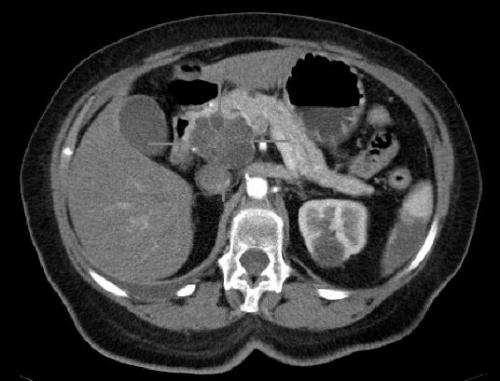A study published in Cell Reports Aug. 6 describes the generation of a new mouse model developed at Hollings Cancer Center that could lead to a better understanding of the cachexia syndrome. This wasting condition, characterized by excessive weight loss, has one of the highest incidence in pancreatic cancer patients.
Denis Guttridge, Ph.D., Hollings Cancer Center associate director of Translational Sciences and principal investigator of the study, says the study found that the newly genetically engineered mouse model, called KPP, better mimics the human phenotype of cancer cachexia.
“We believe that the KPP mouse model better captures what patients go through when afflicted with pancreatic cancer and suffer from cachexia,” he says. “Approximately 70% of patients diagnosed with pancreatic cancer lose significant weight.”
Cachexia depletes patients’ quality of life by causing the loss of skeletal muscle-, the most abundant tissue in humans. It affects cancer treatment by decreasing treatment tolerance and making patients weak and more resistant to treatment, Guttridge says. Actor Patrick Swayze, who died of pancreatic cancer in 2009, suffered from cachexia.
“I got the chance to speak with Patrick Swayze’s wife, and she shared with me how much of a fitness nut her husband was. She remembered that he would go in for his checkup and was always more concerned about why he was losing so much weight rather than the progression of his cancer, because maintaining a quality of life and his fitness was so important to him,” Guttridge says. “Although we understand that cachexia is a consequence of cancer, for such cancers like pancreatic, an effective treatment does not yet exist. So trying to combat cachexia to provide the patient a better quality of life is a big deal.”
Guttridge, a specialist in cachexia, estimates that nearly one-third of all cancer deaths can be attributed to this wasting syndrome, which is devastating for not only the patient but their families as well.
It occurs in many cancers, usually at the advanced stages of disease, and is most commonly seen in a subset of cancers, led by pancreatic, but also present in lung, esophageal and colon cancers.
This study, funded by the National Institutes of Health, is novel because the KPP model overcomes certain limitations present in current animal models, such as the high tumor burden, which is not a common feature of patients.
One nuance of the new model is that it is inducible, thus allowing researchers to control when pancreatic cancer can be triggered through the expression of mutant cancer genes.
“When we turn on these cancer genes, tumors take two months to develop rather than two weeks, as seen in the current models. So we have that extra opportunity to look at events that are happening sequentially,” Guttridge says.
Features in KPP mice showed a better reflection of cachexia symptoms typically seen in humans, than did tradition models, he says. This was evident when researchers compared the gene expression pattern of muscles from pancreatic cancer patients with cachexia and compared them to KPP versus the traditional models of cachexia.
“The match was much more similar with our new model,” Guttridge says. “That’s another level of confidence we can have in trying to recapitulate a model that mimics the human condition.”
Guttridge emphasizes that this is only the first generation of the model, recognizing the need to adjust for particular outcomes such as a level of inflammation that surpasses what they detect in patients.
However, Guttridge is confident that their KPP model will have a positive impact on the future of cachexia research.
“We’re hoping that we will be able to identify new mechanisms that drive muscle wasting and weight loss in cancer patients,” he says. “And because of the timescale of the model, we believe the model will be useful for performing preclinical studies that possibly lead to identifying new drugs that can be translated to the clinic.”
While the study was a team effort, Guttridge credits first author Erin Talbert, Ph.D., a postdoctoral fellow in his lab, for leading the project and creating the KPP model. The project also features Hollings collaborators, including Hollings Cancer Center Director Gustavo Leone, Ph.D.; Maria Cuitiño, D.V.M., Ph.D.; Michael Ostrowski, Ph.D.; Cynthia Timmers, Ph.D.; and other collaborators from The Ohio State University Comprehensive Cancer Center.
“We’re satisfied that we’ve contributed to the field, and we’re eager to see our colleagues use the model and give us feedback,” Guttridge says. “This is a shared resource for the entire scientific community.”
Guttridge is optimistic that the new model will lead to novel discoveries among researchers, including those at Hollings Cancer Center.
“We’re hoping that the KPP mouse will give us new insights into what’s driving cachexia because the more we know about what’s driving this syndrome, the more we’re going to be able to identify viable therapeutic targets,” he says.




